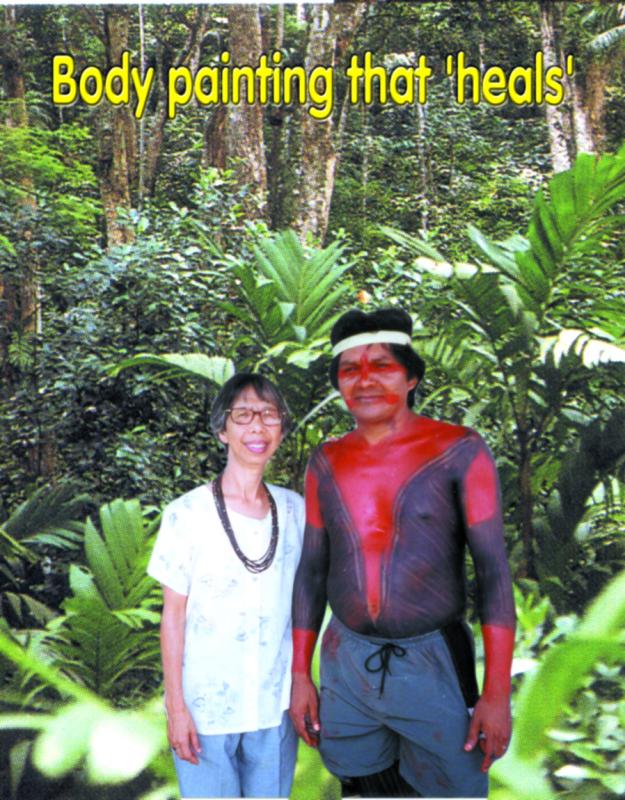Body Painting That ‘Heals’
By Sr. Alice Lansang icm
Sr. Alice Lansang has been living with the Aikewara people in the faraway jungles of Brazil for many years now. Over the years she has come to learn and respect the local culture of these indigenous people. One of those things she has come to realize is that body painting is not just a pastime but has powerful cultural meaning.

I had the privilege of participating in the Feast of the Tingijada whereby three different villages come together to celebrate the yearly great catch of fish, which is one of the main foods of the villagers. In their ritual, the women would paint the husbands and children and then paint each other using a black dye made out of the sap squeezed out from the grated pulp of genipap, a South American fruit tree, which is then mixed with gray ashes; this can stay on for two to three weeks. The dye, they call, is commonly used by most indigenous peoples in Brazil. The wife of the chief was designated to paint me: face, arms and legs with specific designs for every part. All this painting was meant to make the fishes happy, I learned.
Rituals for blessing
At the next planting season, when the soil had been prepared, the village also celebrates the Feast of the Sapurahai to ask the blessing of the spirits. It begins with the five ancients led by Awawassai, the tribe leader, lighting their rolled palm leaves to smoke out the evil spirits. Young men and boys are painted by the women with designs imitating the skin of the leopard, snake, alligator or other animals. Now they are ready for the feast, capped by dancing in a circle imitating animals familiar to them.
Painting to protest
Living with the Aikewara, I discovered that body painting among our indigenous peoples. Aside from being an art in itself, takes on different meanings. One day, I found the young men painting themselves from head to toe with the black genipap. Around their eyes and on their temples they smeared a red mix from atsuete, a native body paint, giving them the impression of a mask. This was their ritual for preparing themselves for the confrontation with the “branches” meaning the government that had made a highway that cuts off 11 km of their reservation. In fact they succeeded in blocking ten trucks carrying the logs so as to oblige the government to negotiate with them.
Not just color but medicine
Later the wife of the local leader explained that body paintings differ in accordance with the occasion; mourning, wedding or initiation to adult life. I also discovered that paintings vary from clan to clan or tribe or gender or even age. In fact sometimes even parts of the body have their appropriate designs. It dawned on me how body painting for them is an art, a ritual as well as a language for communication. I was amazed when one mother covered her baby’s body with thegenipap dye. She told me, “Do you see the irritation all over her body? Well, this mixture will assuage the itch and make the sores disappear.” And true enough, the baby stopped crying and slept peacefully after this salve.
From body paintings to cosmetics
Now I will be coming home to the Philippines and my sister, who is in the cosmetics business in the USA, has given me loads of make-up for my pasalubong. As a missionary from Brazil, with all those delightful days of living with the villagers, seeing the way they express their harmony with nature, their spiritually and respect and care for their bodies through body painting, I cant help but think of how far this tradition has gone astray in these modern day cosmetics. For us in the urban world, it means vanity; for the tribal people it means life.
